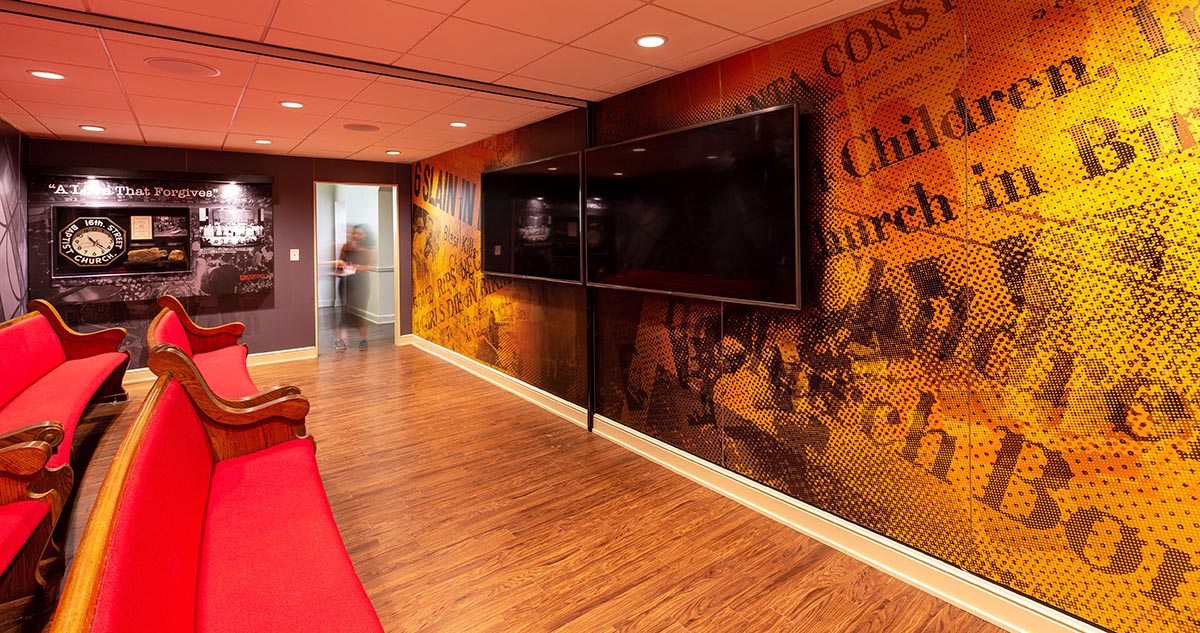n the morning of September 15, 1963, a bomb exploded at the 16th Street Baptist Church in Birmingham, Alabama. In the ladies lounge in the basement of the church, a number of young Black girls were preparing for Sunday school. The blast killed four of them: Addie Mae Collins, Denise McNair, Carole Robertson, and Cynthia Wesley. Twenty-two people were injured. According to the FBI, the dynamite bomb was concealed under a basement back staircase, placed there by members of the KKK. This event, which happened just weeks after the historic March on Washington and Dr. Martin Luther King, Jr.’s “I Have a Dream” speech, further galvanized the civil rights movement. But it would not be until years later that three suspects were tried and convicted for this hate crime.
The 16th Street Baptist Church has created a museum in the church basement to memorialize this event in civil rights history, and to tell its own story. The congregation was founded in 1873 as the city’s first Black Baptist church, and seven years later it moved to the 16th Street location. In 1911 they completed a new church building of brick and brownstone designed by Wallace Rayfield, at the time the state’s only Black architect (see “His Light Shines in Our House”, for more on Rayfield’s career). In the early years of the 1960s the church became a rallying point for mass meetings of the Black community to fight discrimination through protests and marches, which led to it becoming a target for the bombing. In 2006, the church received National Historic Landmark designation from the US Department of the Interior because of its significance in the history of the civil rights movement.
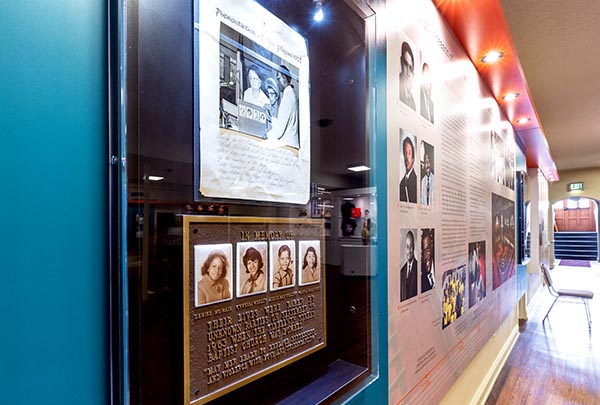
The exhibit is designed to run the periphery of the basement wall, recounting the church’s history, including the bombing deaths of four girls in the congregation.
Method-1
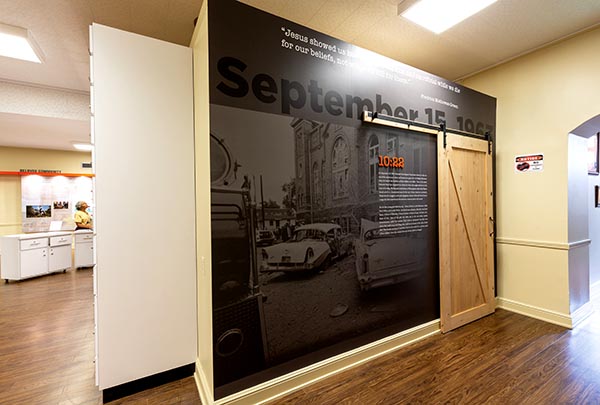
The exterior of the “experience room” gives an account of the bombing at 10:22 AM on September 15, 1963, using historic photos and reflections on Christian teaching.
Method-1
Preservation and restoration of the church’s exterior and sanctuary started in the early 2000s. Foundation cracking, water infiltration, and damage were the priority in remedial work in the basement, says Scott Thompson, senior architect with ArchitectureWorks of Birmingham. “They had a lot of perimeter foundation cracking, lots of water damage from below grade, with no water proofing,” explains Thompson. “We stabilized the building, keeping water out of it.”
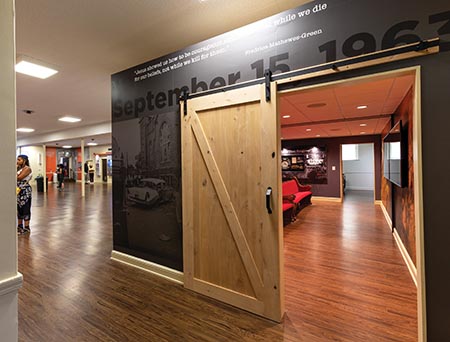
The “experience room” is found at one end of the exhibit display space and features a film about the bombing.
Method 1
When work completed in the upper church, attention returned to the basement as a place where the church’s history could be told. According to Theodore Debro, Jr., chair of the church’s board of trustees, grants from the National Park Service’s African American Civil Rights Grant Program, Alabama Power Foundation, and many local institutions provided funding for the museum. ArchitectureWorks refinished the basement to create a conducive space. Interior and perimeter walls were plastered and painted, and new LVT vinyl flooring was installed throughout. A new accessible restroom was created, some power and utilities installed, and ductwork was extended for use in the new museum space.
The church then engaged Method-1 Interiors and Warner Museums of Culton Companies, and collaborated with David Currey of Encore Interpretive Design, to select historic artifacts for display, design the exhibit, and create an “experience room” to immerse visitors in the historic event, according to Adam Huxhold of Culton. A key element in the design of the museum was preserving space that could be used for receptions, meetings, and Sunday school instruction. This requirement generated a museum layout that uses the central space’s periphery walls as a timeline exhibit to document the church’s history from its founding to the present day. Artifacts are displayed in cases designed to be unobtrusive to the central space.
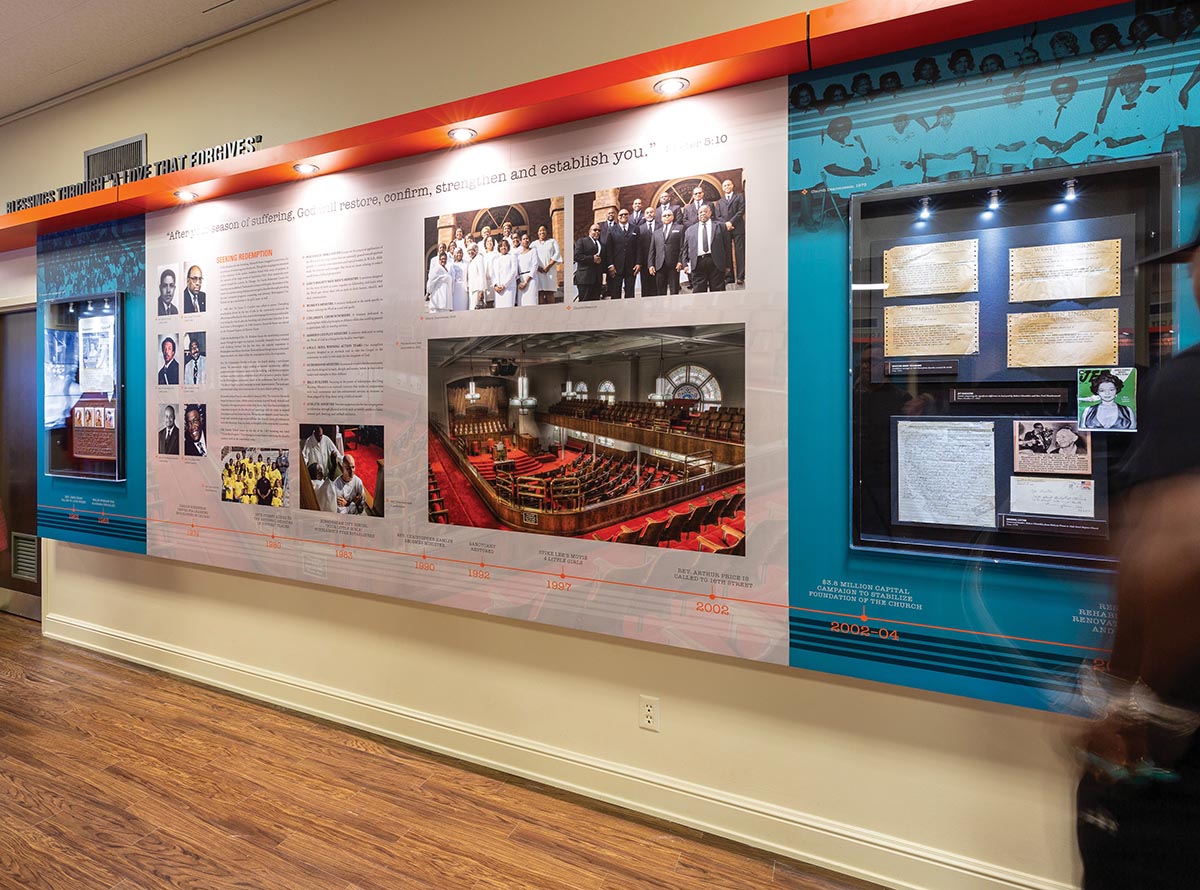
Along the periphery of its basement wall, this timeline tells the history of the 16th Street Baptist Church.
Method 1
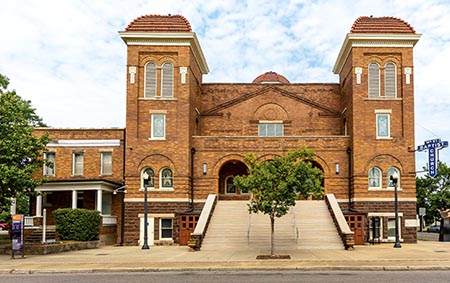
Restored exterior of brick and brownstone 16th Street Baptist Church, with its recently restored parsonage to the left.
Method 1
A multiscreen wall welcomes visitors at one end of the space and introduces them to the church and its history. The ladies lounge in which the girls were preparing for Sunday school on that fateful September day in 1963 was in the basement. Its exact location is now occupied by a new kitchen, a wall of which is dedicated to telling the story of the bombing near the very spot where the young women perished. At the opposite end of the space from the multiscreen wall is the “experience room,” an enclosed space furnished with original pews from the church that can accommodate a few dozen visitors. The pews face a wall covered with enlargements of headlines and newspaper clippings on the bombing, and dual video screens. Visitors can immerse themselves in a 15-minute documentary film created for the exhibit by historian David Currey. The film features many poignant interviews, including one with Sarah Collins, the lone survivor of the blast that morning and sister to victim Addie Mae Collins. Rev. King’s eulogy is used throughout the film and at the end, as a powerful and emotional culmination.
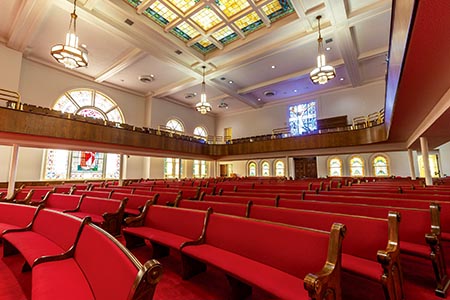
Restored sanctuary space was completed before the museum was designed and installed in the refinished basement.
Method 1
Perhaps the most affecting artifact on display in the “experience room” is a clock that hung in the church, its hands stopped at 10:22 AM—the time of the explosion. It is a piece of frozen history, a history that has been movingly rendered in Birmingham’s 16th Street Baptist Church Museum.
Note: 16th Street Baptist Church is also participating in the National Fund for Sacred Places. The Fund is supporting repairs to the adjacent parsonage, which will be housing a visitors’ center and museum dedicated to the life and work of Wallace Rayfield.

